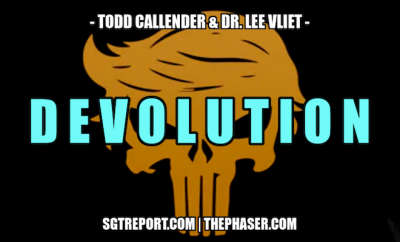 The Daily Coin
The Daily Coin
Economy
Fed’s Dudley Warns about Wave of Municipal Bankruptcies
by Wolf Richter, Wolf Street , via The Daily Coin.com:
It has been a persistent ugly list of municipal bankruptcies: Detroit, MI; Vallejo, San Bernardino, Stockton, and Mammoth Lakes, CA; Jefferson County, AL. Harrisburg, PA; Central Falls, RI; Boise County, ID.
There are many more aspirants for that list, including cities bigger than Detroit. Detroit was the test case for shedding debt. If bankruptcy worked in Detroit, it might work in Chicago. Illinois Gov. Bruce Rauner wants to make Chapter 9 bankruptcies legal for cities in his state, which is facing its own mega-problems.
“Bankruptcy law exists for a reason; it’s allowed in business so that businesses can get back on their feet and prosper again by restructuring their debts,” Rauner said. “It’s very important for governments to be able to do that, too.”
His plan for sparing Illinois that fate is to cut state assistance to municipalities, which doesn’t sit well with officials at these municipalities. Chicago Mayor Rahm Emanuel’s office countered that balancing the state budget on the backs of the local governments is itself a “bankrupt” idea.
Puerto Rico doesn’t even have access to a legal framework like bankruptcy to reduce its debts, but it won’t be able to service them. It owes $73 billion to bondholders, about $20,000 per-capita – more than any of the 50 states. If you own a muni bond fund, you’re probably a creditor. Bond-fund managers use its higher-yielding debt to goose their performance. But now some sort of default and debt relieve is in the works. The US Treasury Department is involved too.
“People before debt,” the people in Puerto Rico demand. It’s going to be expensive for bondholders.
That’s the ugly drumbeat in the background of New York Fed President William Dudley’s speech today at the New York Fed’s workshop, “Chapter 9 and Alternatives for Distressed Municipalities and States.”
“We at the New York Fed are committed to playing a role in ensuring the stability of this important sector,” he said, referring to the sordid finances of state and local governments. But he wasn’t talking about future bailouts by the Fed. He was issuing a warning to municipalities and their creditors about “the emerging fiscal stresses in the sector.”
It’s a big sector. State and local governments employ about 20 million people – “nearly one in seven American workers.” The sector accounts for about $2 trillion, or 11%, of US GDP. And its services like public safety, education, health, water, sewer, and transportation, are “absolutely fundamental to support private sector economic activity.”
The problem is how all this and other budget items have gotten funded. There are about $3.5 trillion in municipal bonds outstanding. So Dudley makes a crucial distinction:
When governments invest in long-lived capital goods like water and sewer systems, as well as roads and bridges, it makes sense to finance these assets with debt. Debt financing ensures that future residents, who benefit from the services these investments produce, are also required to help pay for them. This principle supports the efficient provision of these long-lived assets.
“Unfortunately,” he said, governments borrow to “cover operating deficits. This kind of debt has a very different character than debt issued to finance infrastructure.” It’s “equivalent to asking future taxpayers to help finance today’s public services.”
In theory, 49 states require a balanced budget every year, but it’s easy enough to “find ways to ‘get around’ balanced budget requirements” and cover operating expenses with borrowed money, he said, including the widespread practice of “pushing the cost of current employment services into the future” by underfunding pensions and retiree healthcare benefits for current public employees.
The total mountain of unfunded liabilities remains murky, but estimates for unfunded pension liabilities alone “range up to several trillion dollars.” With these unfunded liabilities, employees are the creditors. That would be on top of the $3.5 trillion in official debt, where bondholders are the creditors.
Read More @ The Daily Coin.com

















